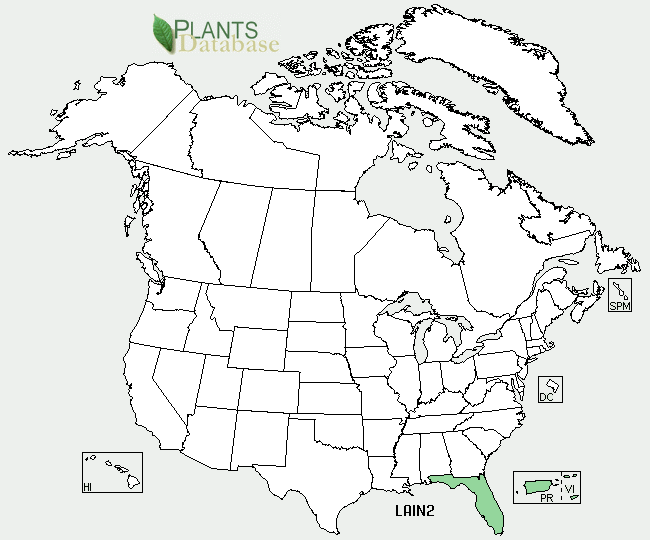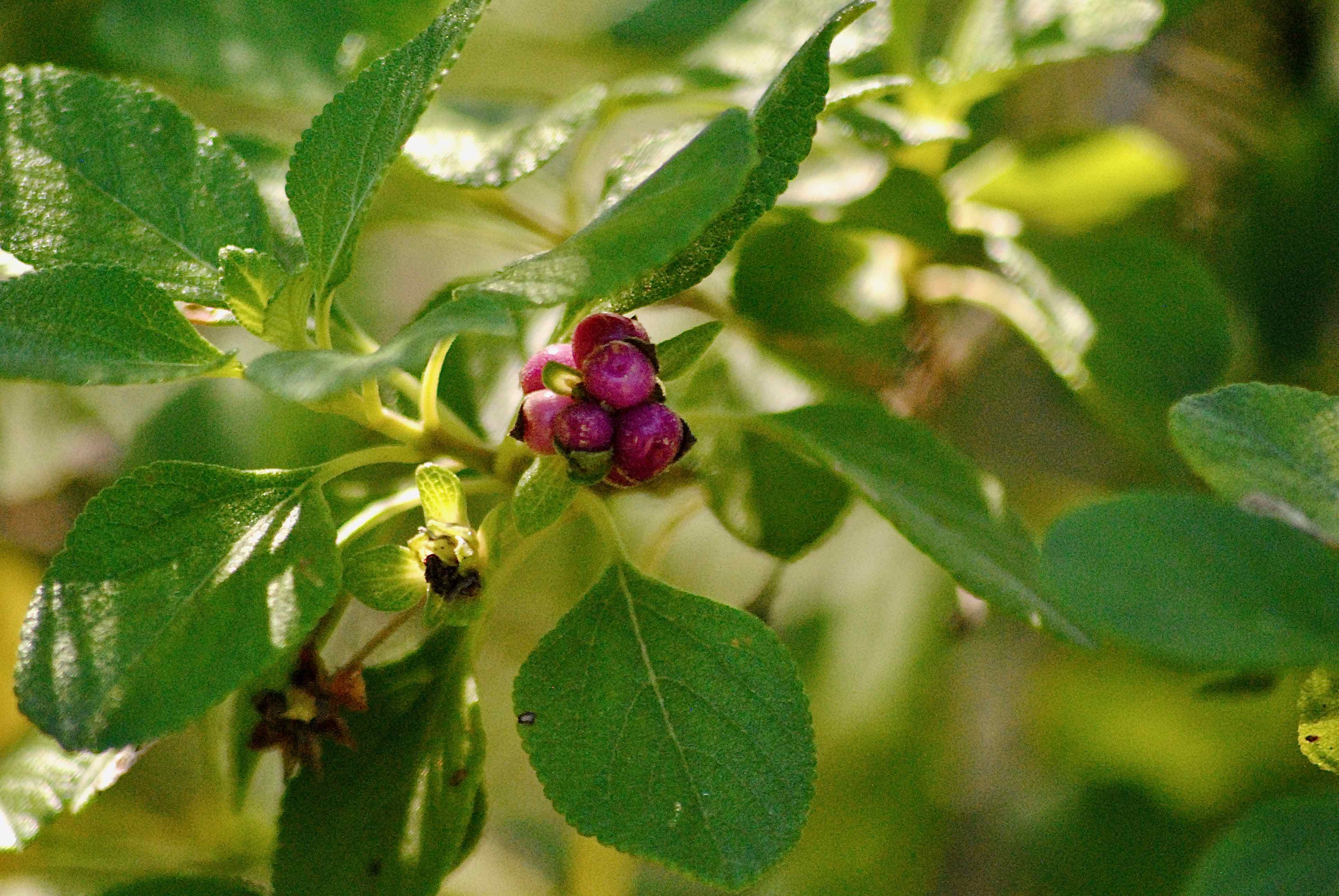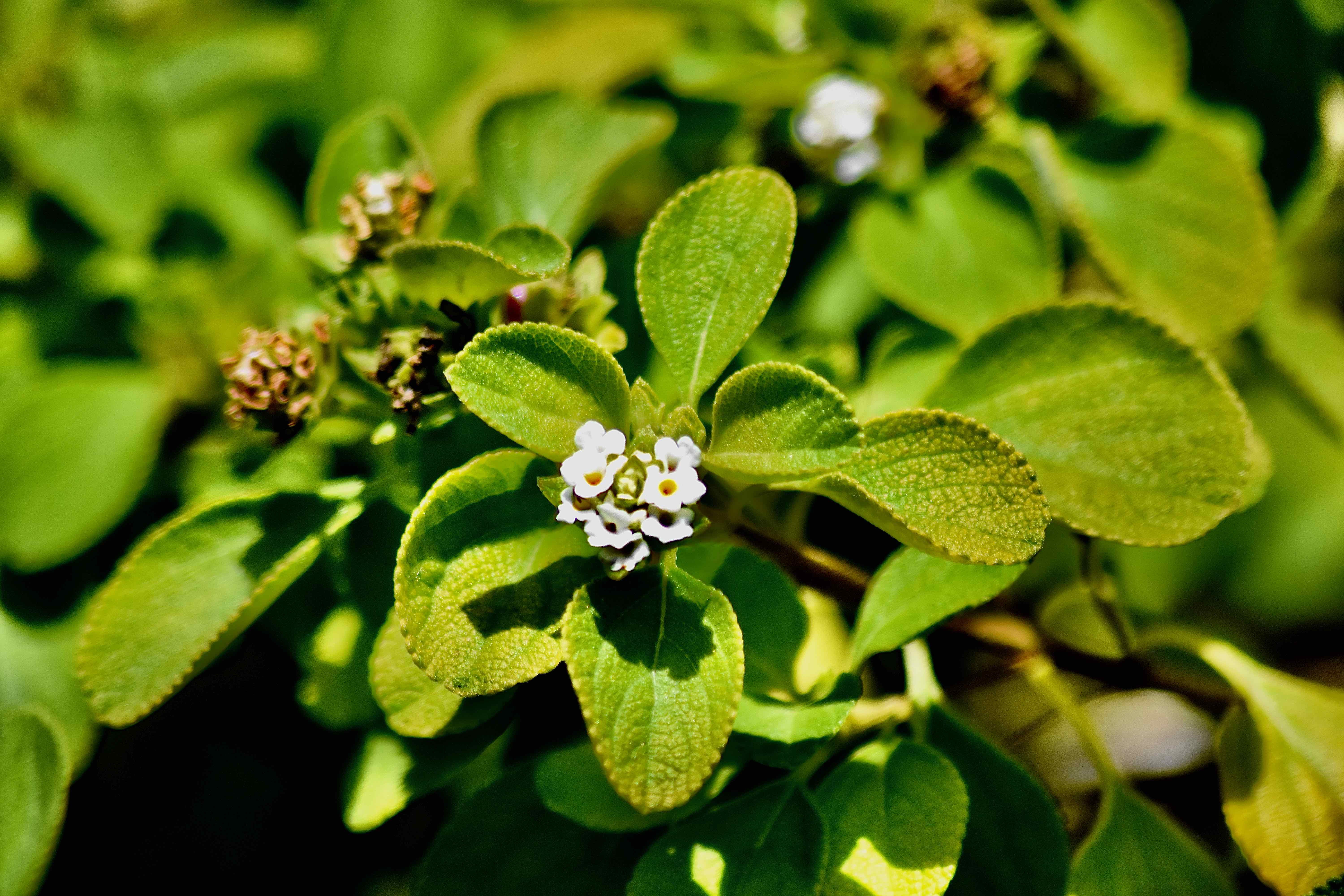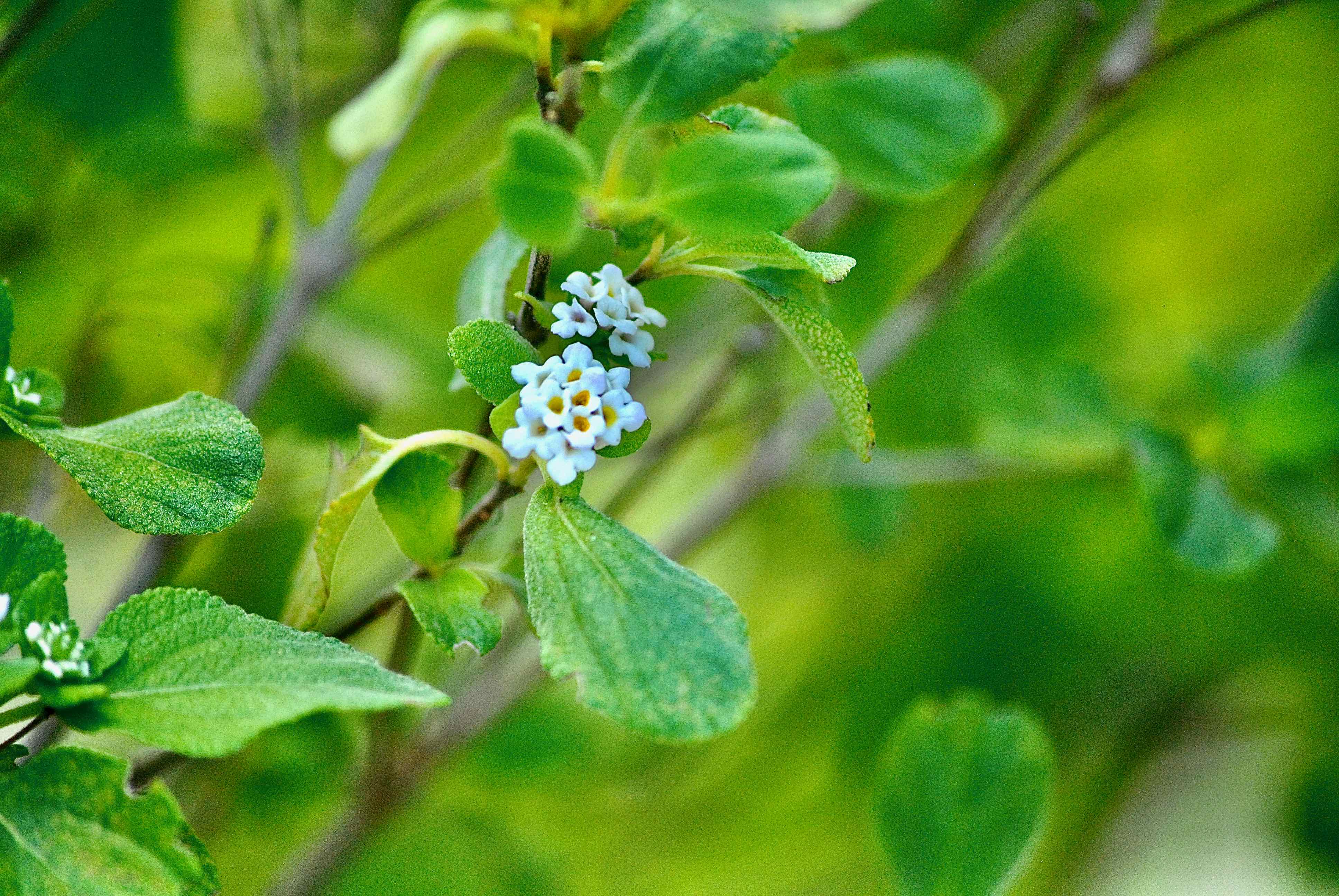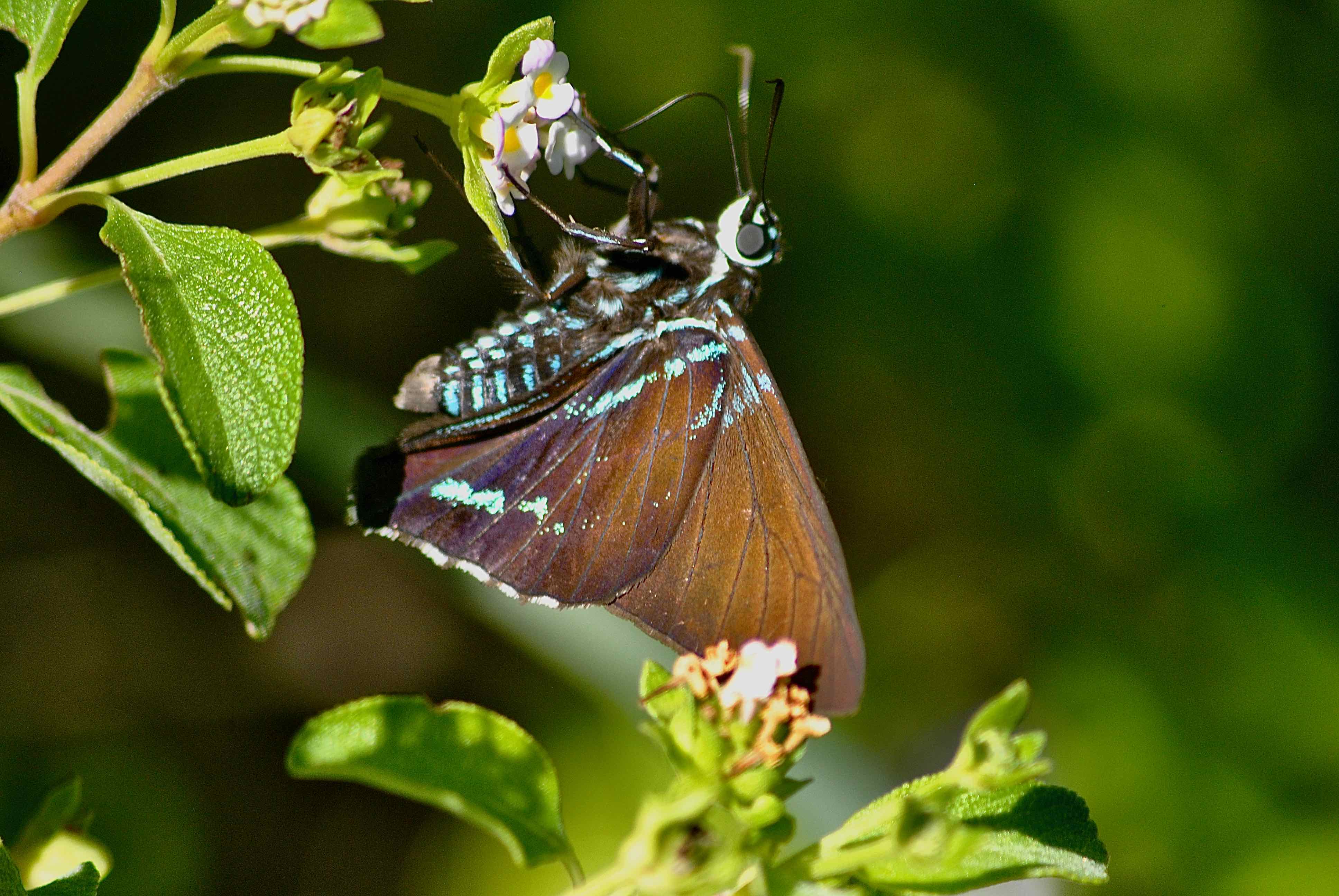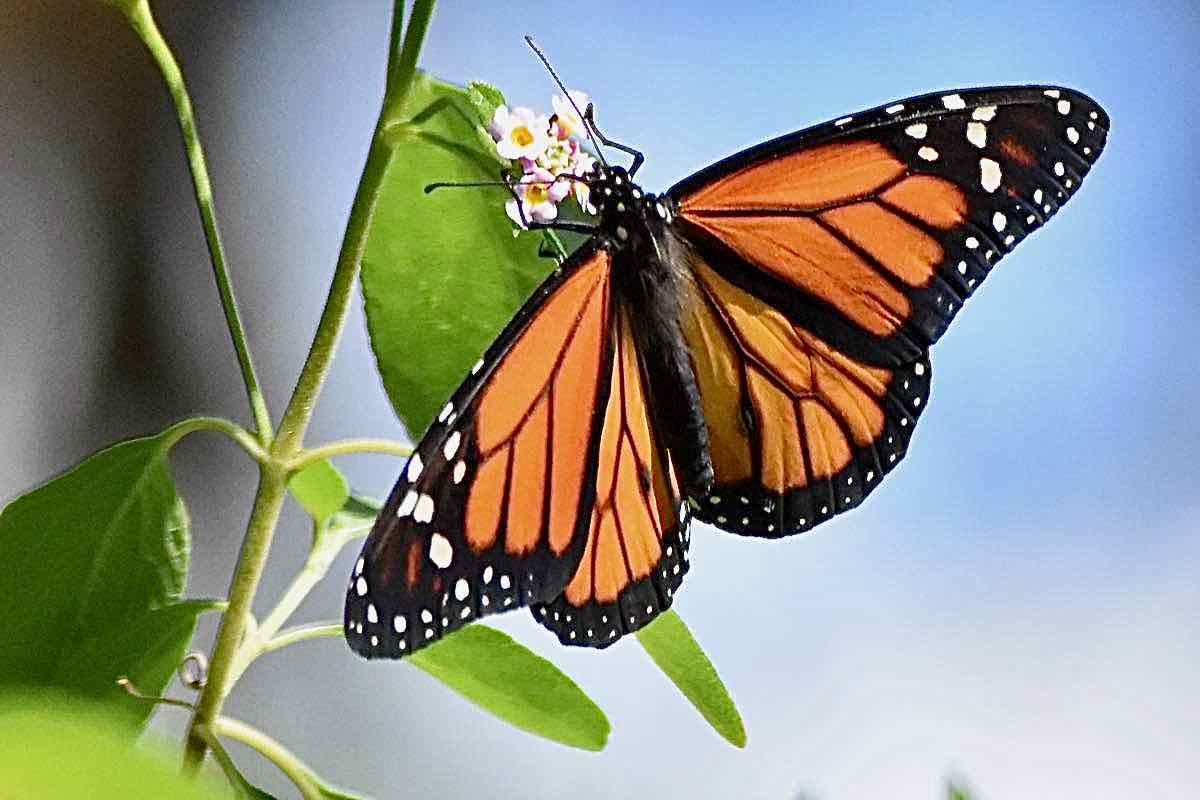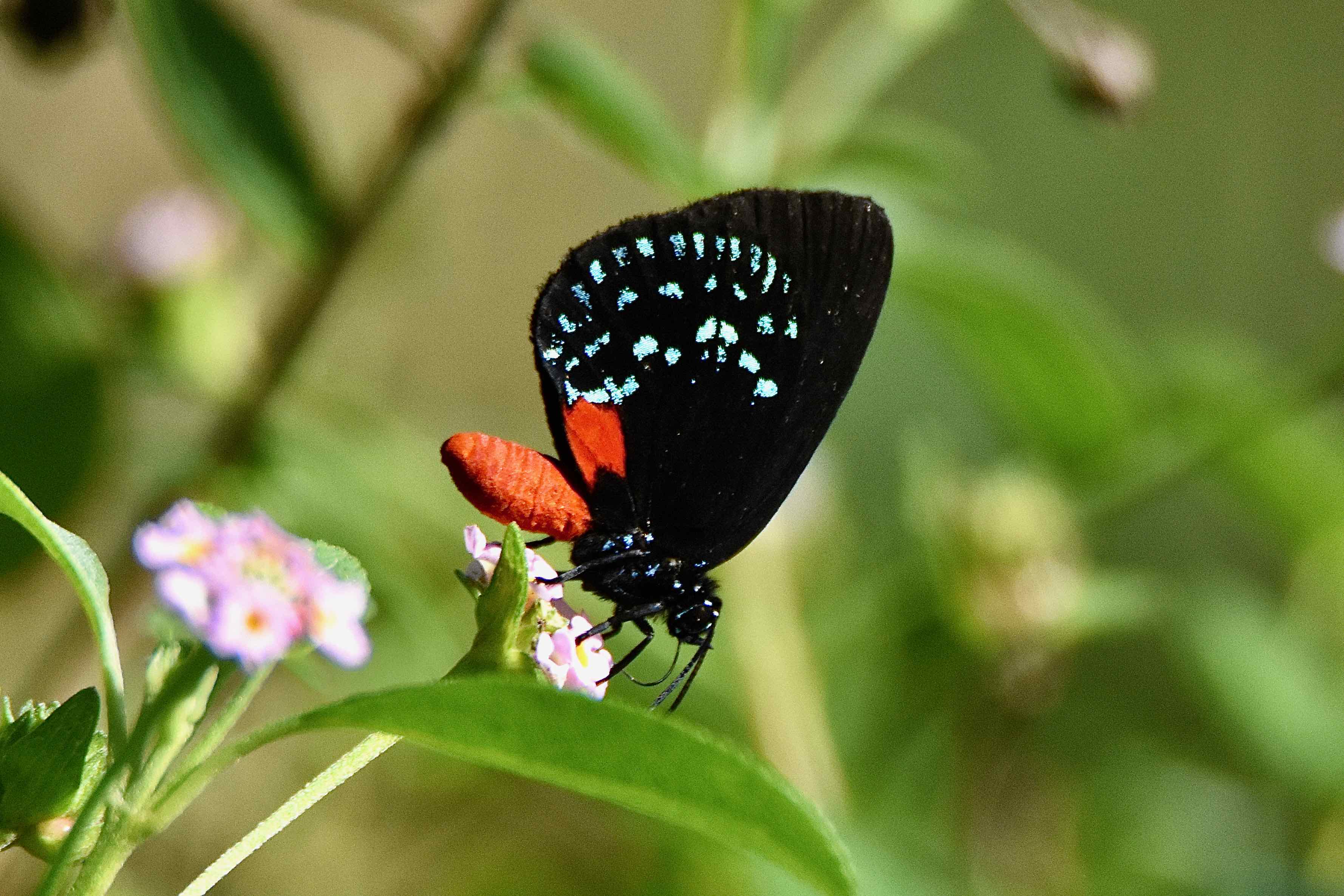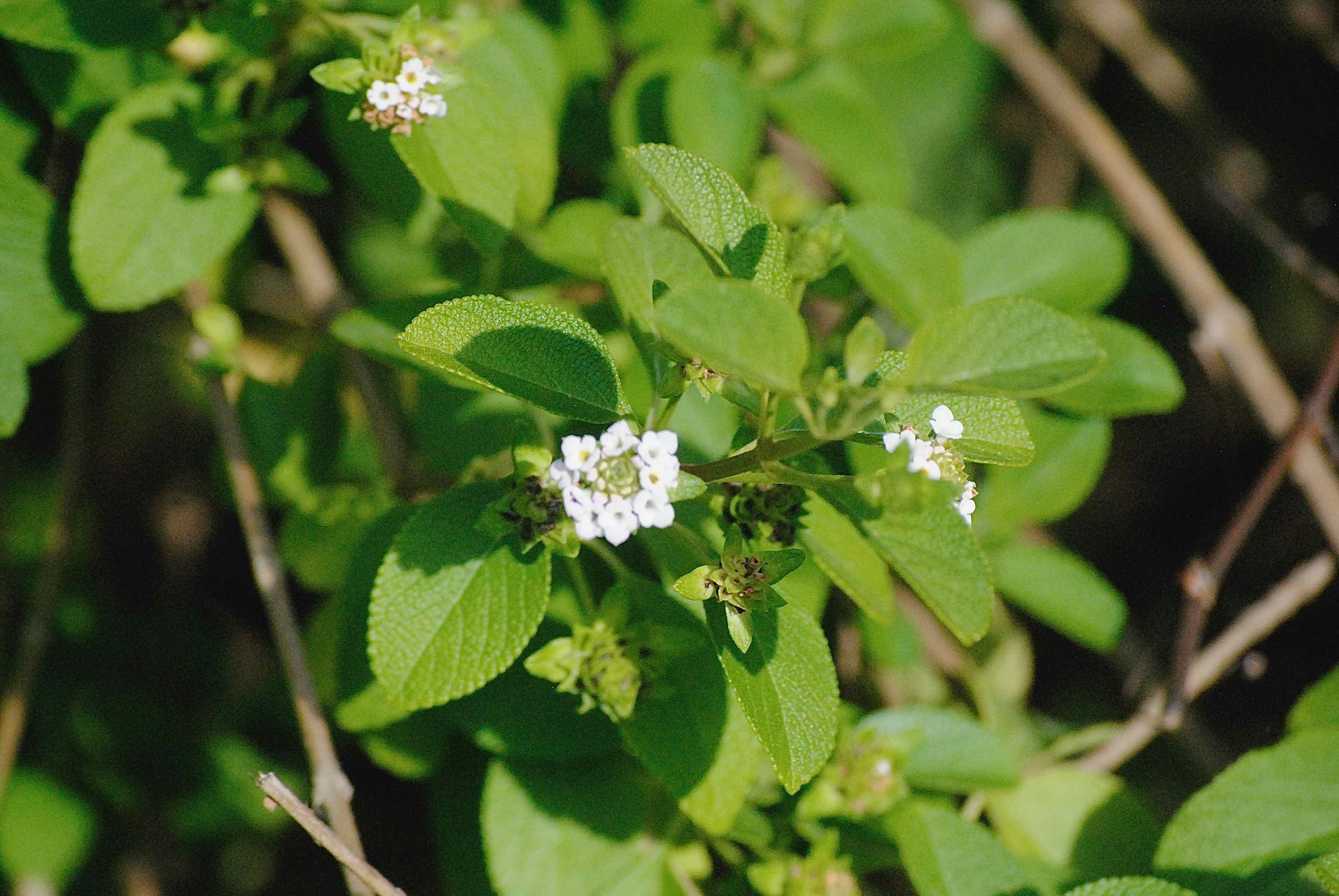
Lantana involucrata, photographed at Key West Forest and Tropical Garden, Stock Island, Monroe County, in April 2017.
Butterflies seem to love Lantana involucrata, AKA wild sage, and so do humans. We love it in part because they love it. But also because of its good looks and all around usefulness. It doesn't hurt that it's a Florida native.
Its clusters of white and yellow flowers attract a host of butterfly species, including the incredibly rare atala and even rarer Miami blue. But the flowers are beautiful in their own right, and they give way to clusters of an equally attractive small, purple fruit.
First a word about the Lantana species. There are eight species and subspecies of Lantana found in South Florida, of which five are native, according to the Institute for Regional Conservation in Delray Beach. Three of the five are threatened by the nonnative and invasive Lantana camara, which is widely sold commercially. On the other hand, Lantana involucrata, our guy, is secure.
Lantana involucruta's native range includes coastal areas of southern Florida, forming a horseshoe on the map that extends from Brevard County on the Atlantic to Pinellas on the Gulf. The United States Department of Agriculture says it's only found in Florida among the 50 states, but others include south Texas. It's also native to the Bahamas, the Caribbean, Mexico, Central America, parts of South America and the Galapagos Islands.
Lantana involucrata is a shrub that can be as short as three feet or as tall as 10. The IRC says in South Florida it typically is four to eight feet tall and is as wide as it is tall. The leaves are rough to the touch and the edges are slightly serrated. When crushed, they smell like sage, inspiring several of its common names. But the flowers and the fruit are the real show with this Lantana. The blooms are white or pink with a yellow center, small but clustered together in what's technically called an infloresence.
The flowers produce a small purple berry-like fruit called a drupe (shown at bottom left) that attract birds. Both the flowers and the fruit appear year round. Habitats includes pine rocklands, the edges of hammocks and shell mounds. It likes full sun, tolerates drought and salt spray but not salt water. It can withstand high winds.
Lantana is grown commercially and used in landscaping as a cover plant, screen, accent, buffer or hedge. It's also considered one of the best plants for attracting butterflies — the adults of the aforementioned atala and Miami blue, the Cassius blue, sulphurs, skippers, hairstreaks and more all visit the flowers for their nectar. The list goes on and on. Other natural benefits include providing cover for wild life and protecting soil from erosion.
According to the USDA, the leaves of Lantana involucrata are used in cooking to flavor foods. The oil of the plant is used in cosmetics and liquors. It has been used in folk medicine to control coughing, vomiting and congestion and to break fevers. The leaves are added to baths to ease heat rash and insect bites. A tea is said to act as a sedative. According to another source, the leaves have been used to treat chicken pox and measles.
Lantana involucrata's common names: wild sage, buttonsage, sea sage, white sage, oregano, wild lantana, white lantana, big sage and teeny weeny sage. How the last two are squared, we don't have a clue. It is a member of Verbenaceae.
Photo Gallery — Click on photo for larger image
Lantana and Butterflies
U.S. Department of Agriculture Distribution Maps
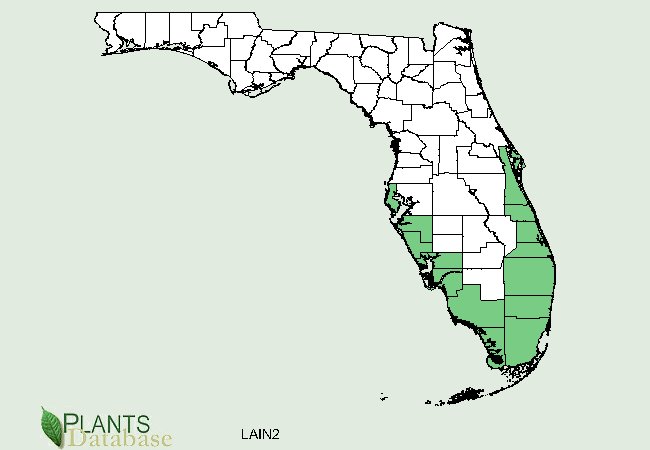 width="600" height="400">
width="600" height="400"> 
